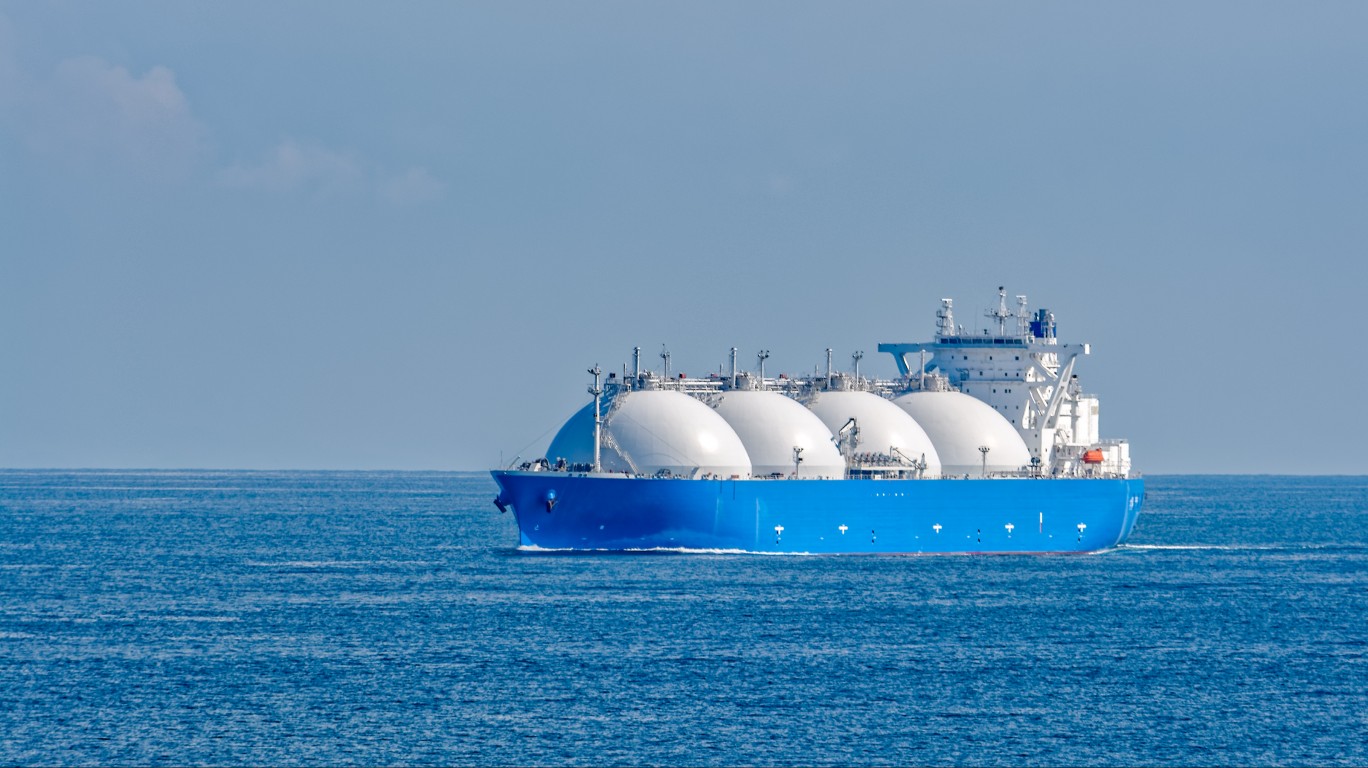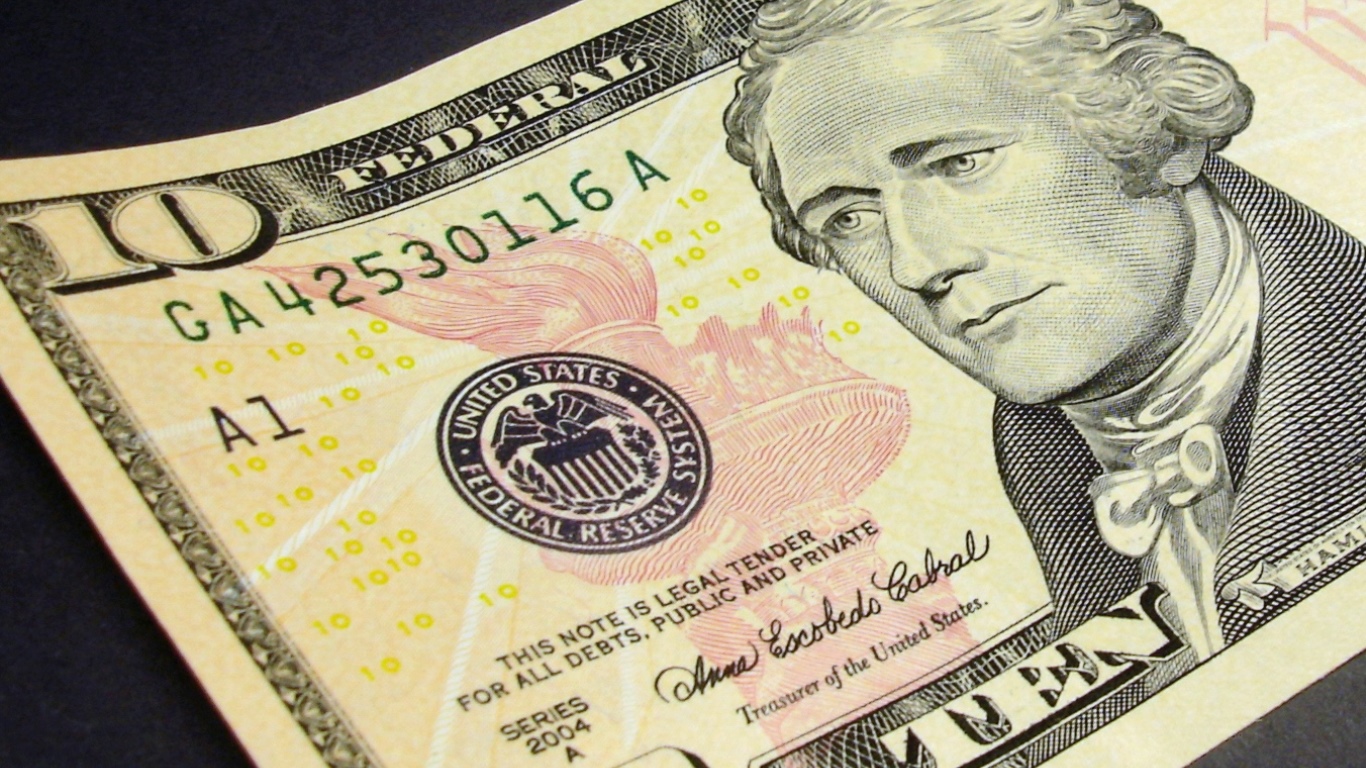
In May, natural gas prices at Henry Hub, the main U.S. pricing point, jumped to more than $8.00 per million BTUs, still well below the July 2008 peak of $12.69. Demand for natural gas is being driven by European demand for a replacement of Russian gas following the invasion of Ukraine. Demand for U.S. liquefied natural gas (LNG) is especially strong.
In a new research note from Umang Choudhary and his analyst team, Goldman Sachs remains bullish on U.S. natural gas stocks due to the high demand for LNG and the gas producers’ more disciplined approach to meeting that demand. That said, economic risks related to a June explosion at the Quintana, Texas, Freeport LNG export terminal and to future supply growth that is “likely to be met with very limited growth in US LNG exports.” The Freeport terminal may not return to service until September due to public safety concerns.
Gas producers are working with estimates of $2.95 to $3.13 per million BTUs for 2024 and 2025, based on an estimated Brent crude oil price of $90 per barrel. Futures trading currently has 2024 and 2025 prices at $4.57 and $4.37, respectively, and Goldman Sachs has estimated a mid-cycle price of $3.50. The analysts recommend that investors look for companies that offer “the best risk-adjusted returns in the near-term taking into account the company’s assets, balance sheet and FCF [free cash flow] outlook.”
Choudhary and his team have initiated coverage on Chesapeake Energy Corp. (NASDAQ: CHK) with a Buy rating and a 12-month price target of $106 per share. Based on Friday’s closing price of $83.18, the upside potential to Goldman’s price target is 27.4%. Chesapeake joins Antero Resources Corp. (NYSE: AR), EQT Corp. (NYSE: EQT) and Coterra Energy Inc. (NYSE: CTRA) as the four Buy-rated stocks in Goldman’s natural gas coverage.
At the other end of the spectrum, or what Goldman calls its barbell, Comstock Resources Inc. (NYSE: CRK) was downgraded from Neutral to Sell. The price target on the stock was left unchanged at $12. Comstock’s shares already trade above Goldman’s price target.
The other high-volatility barrel stocks are Range Resources Corp. (NYSE: RRC), which was maintained as a Sell, and two Neutral-rated stocks, Southwestern Energy Co. (NYSE: SWN) and National Fuel Gas Co. (NYSE: NFG).
Looking in more detail at Chesapeake, Choudhary and his team liked the post-bankruptcy acquisitions of Vine Energy and Chief Oil & Gas, the former located in the Haynesville play and the latter in Appalachia, that have given the company more than 15 years of inventory and potential free cash flow yields of 26%, 24% and 15% in 2022, 2023 and 2024, respectively, better than the industry average for gas-focused exploration and production companies. This allows Chesapeake to “deploy the bulk of its FCF towards a capital returns program — a combination of fixed/variable dividends and share repurchases.”
Comstock Resources also holds attractive assets in the Haynesville play and could improve its balance sheet by generating more free cash flow and increasing returns to shareholders. Goldman’s analysts estimate that free cash flow generation for 2022, 2023 and 2024 will be 25%, 19% and 6%, respectively, lower than the peer average in the past two years. The analysts also note that Comstock “is levered to natural gas prices due to its less strong balance sheet/growth strategy, [and] we believe further upside to natural gas prices, especially in the winter, is a key risk to our Sell-rating.”
Choudhary and his team also commented on the other stocks in Goldman’s natural gas-focused stock coverage. Antero has “underperformed in part due to lower NGLs [natural gas liquids] prices.” Still, the company’s expected free cash flow allows for “meaningful capital returns in form of share repurchases.” Goldman’s price target on Antero’s stock is $43, implying an upside potential of 31.5% based on Friday’s closing price of $32.69.
Buy-rated EQT is well-positioned to take advantage of Goldman’s long-term natural gas forecast for an average free cash flow yield of around 17% between 2023 and 2026. The analysts assume $1.5 billion in share buybacks this year and $1.9 billion next year. Goldman lowered EQT’s $48 price target to $47, implying an upside potential of 28.3% based on Friday’s closing price of $36.62.
The fourth of Goldman’s Buy-rated stocks is Coterra Energy. The stock’s price target was cut from $31 to $30, implying a potential gain of 11.4% based on Friday’s closing price of $26.92. The analysts expect Coterra to “deploy the bulk of its FCF towards dividends/share repurchases.” Free cash flow yield this year is estimated to be 23%, higher than the 22% average for the peer group.
The analysts maintained their Sell rating on Range Resources and their 12-month price target of $31. At Friday’s closing price of $27.01, the implied gain based on Goldman’s target is about 14.8%. The company could $1.5 billion in debt reduction by the end of this year and complete a $500 million share buyback plan at the same time%.
Southwestern Energy, which now holds some 275,000 net acres in the Haynesville play, has a downside risk from “higher inflation … due to higher service/labor costs.” Southwestern also plans to reduce net debt to around $3.5 billion by the end of 2023, and Goldman expects share buybacks to total about $900 million in the same time frame. At Friday’s closing price of $5.76, the upside potential based on Goldman’s unchanged price target of $7.50 is 30.2%. The company’s free cash flow yield for 2022 is estimated at 15%, well below the peer average.
National Fuel Gas, like Southwestern, has a Neutral rating from Goldman Sachs. Unlike Southwestern, the company operates in Appalachia and has non-regulated gathering assets and a regulated pipeline/distribution business. Goldman notes that the company “is likely to be defensive relative to our upstream gas coverage if natural gas prices are lower.” The analysts maintained a $60 price target on the stock, implying a potential drop of 7.1% based on Friday’s closing price of $64.26.
It’s Your Money, Your Future—Own It (sponsor)
Are you ahead, or behind on retirement? For families with more than $500,000 saved for retirement, finding a financial advisor who puts your interest first can be the difference, and today it’s easier than ever. SmartAsset’s free tool matches you with up to three fiduciary financial advisors who serve your area in minutes. Each advisor has been carefully vetted and must act in your best interests. Start your search now.
If you’ve saved and built a substantial nest egg for you and your family, don’t delay; get started right here and help your retirement dreams become a retirement reality.
Thank you for reading! Have some feedback for us?
Contact the 24/7 Wall St. editorial team.

 24/7 Wall St.
24/7 Wall St. 24/7 Wall St.
24/7 Wall St.



